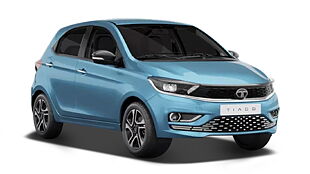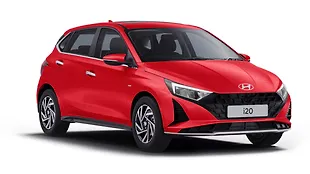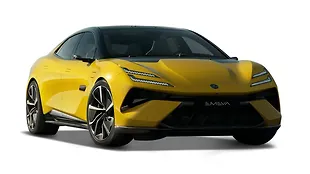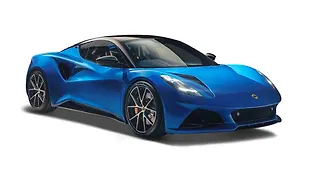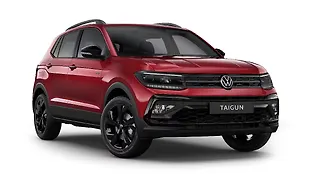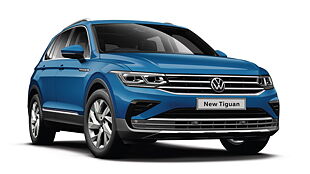To Chennai
'Walter Rohrl, the legend, hugs me as I get off the car, I am surrounded by pit girls, one of them hands me a bottle of champagne. What a moment! I have driven the Porsche 911 Turbo S into history; I did the Nordschliefe faster than the Nissan GT-R by three seconds. Pop the champagne, said the beautiful pit girl, in a masculine voice? Yikes, she sounded like Ambre, my colleague, good lord, where did he come from?' “It is 6.30, wake up.” My dream fizzled down like a bottle of cola, finally I woke up and promised myself, I will conquer the Ring someday, but for now the task was to reach home, “on time.” Jesus, a long day awaited me, after 12 hours of travelling I finally reach Singara Chennai to witness how rubber takes shape as tyre.

One of India’s leading tyre manufacturer, Apollo invited us and a bunch of eager journalists to witness the process of tyre making at their new plant in Sriperumbudur. This Greenfield plant situated on the outskirts of Chennai is one of their latest facilities in India. Currently, Apollo has a market share of 17 per cent in the market which they plan to increase. Their first ever plant was commissioned in Kerala and they also have plants in South Africa, Zimbabwe and Netherlands.
The plant that we visited measures 121 acres and has a production capacity of 500 tonnes which will go up to 750 tonnes as a part of their expansion plan. Currently, the factory dishes out 16,000 tyres per day which also includes truck and bus radials.
The next day, I geared up like a college kid eager to get that one extra detail more than his fellow students to get more marks. No Photography! By order, alright so, I would be allowed to shoot questions, only!
Tyre Factory
Fair enough, I said to myself and headed inside with the rest of the eager journos. We were taken to a conference room for a brief chat with Satish Sharma, president Apollo tyres. We had a nice conversation with him on the recent acquisition of Vredestein brand and the Chennai plant. Sharma, did tell us that they will venture into the luxury car tyre segment soon. They have big ambitions for the future, but Sharma had limited time and we didn’t talk in detail about those plans. However, we were at the right place, the Chennai facility will play a key role in their future plans.
After our session with Sharma, I was eager to get down to business - the factory tour. John Devadason, unit head, Apollo Chennai plant was to be our host for the day, but he had an impromptu meeting to attend so he said we will be joined by someone else. I wished that it be someone who would answer all my queries. A few minutes later John introduces us to Prakash, group leader, passenger car manufacturing, Apollo tyres, Chennai.

"Hi, I am Prakash T.V" said the tall man; I asked him to repeat his initials, he answered gently, "T.V for television" and his poker face brought a smile on our faces. This sharp and witty person was our host and factory guide for the day and he would be the one who would explain in detail, the art of tyre manufacturing.
Prakash began his session with the nerve centre, the place from where they can monitor the entire plant. The Nerve centre is essentially a control room of sorts from where the guys can supervise the happenings of the entire plant. There were six screens and a SCADA (supervisory control and data acquisition system) interface running, in simple terms a display that monitors and acquires the data in the plant.
Final Product
It was time to start the factory tour, I enthusiastically exit the nerve centre. "Wait, go there and wear the safety shoes," instructed Prakash. While some had a laugh, a few loathed wearing those safety shoes. I was part of the latter group as those shoes didn't fit me. So, the entire day I had to be mindful of those shoes not flying away while I walked.

After this we entered a laboratory, this is where the component and ingredient testing takes place before it is used in a tyre. We were shown the Mooney Viscosity, a machine that measures the viscosity of rubber, and other test benches. This is basically where they test the raw materials. The lab is also where the right mix of ingredients (yes, that’s how Prakash refers to it) are chosen based on the test results. Interestingly, this was the day, I got to know that Reliance also supplies raw materials to tyre manufacturers. The curiosity in me ensured that I ended up sniffing the synthetic and natural rubber chunks. After inspecting all this Prakash came to us and said, "Okay listen now we will show you the tyre building process."
Before taking form as a tyre, the rubber and the components go through six rigorous steps which are the part of the tyre manufacturing process. A detailed explanation of these steps is mentioned below.
Mixing
In this process two large machines called 'Banbury Mixers' do the job of mixing the ingredients required to make a tyre. The raw material is fed into the mixer which makes rubber look like molten chocolate flowing out. The molten rubber looked like a tasty blend of dark chocolate, alas we couldn’t eat it. This is the mother process, the process where it all begins as this rubber will be used for various parts of a tyre.
Extrusion
The molten rubber then goes through the extrusion machines and is then cooled off and pressed into rubber sheets. These sheets are then cooled further and dipped into a chemical compound to prevent them from sticking to one another. There are separate extruders depending on the specific part of the tyre it is needed for. There were extruders for rubber required for inner liners and sidewall as well.

Calendering
A tyre also consists of fabric and steel cords. They are used in the inner layer and also in the beads. These steel cords come from two manufacturers – Kiswire and Bekaert from Malaysia and Pune respectively. These steel cords come in rolls in excess of 300 metres and are consumed at a rate of 40 metre a minute. These cords are then pressed together into hot rubber by the two gigantic drums in the calendering machine. In a similar process the fabric cords are also imbibed in rubber and then the resultant in case of the tyre bead is a loop. Later, a process called ‘pork chop’ occurs wherein the inner belts are chopped just like a butcher would chop meat. This process is done before sending it for tyre assembly.

Tyre Building
In this process as the name sounds, the tyre building takes place. A long belt is what we see and lots of rubber called ‘green tyres.’ The raw unfinished tyre is called a green tyre, it is not to be confused with the colour of the tyre. This was pretty exciting to see as we had pretty much seen the steps involved so much so that it seemed like the climax of a movie. The inner liner, inner belts, sidewall, bead loop all go into a central rubber bladder (the machine) that inflates the tyre carcass, this was exciting to watch as every time we saw one being inflated, the finishing touch would be followed by a ‘pop’ noise. This tyre carcass then is carried by the technician, who gets the tyre a bar code and the green tyre is ready.

Curing
The finishing touches will be added here, the green tyre will go into moulding machines. These moulding machines have the tread pattern and the numerous lettering that one can see on the sidewall of any tyre. The curing takes place over a duration of minimum eight to 20 minutes; this also depends on the tyre. For eg: The Apollo Alnac might require 14 minutes of curing time, whereas the Accelere may need lesser time as the mixture and tyre compound are different for both tyres. Once completed the final product which emerges, is then sent to the quality department.

Inspection
While I didn’t see this with as much enthusiasm, but the balancing machine caught my eye. The finished product is spun at a set speed to find out if the tyre is balanced properly. Once this is done it gets two coloured markings - yellow and red. The yellow marking specifies the lightest part of the tyre, this is where the valve of the tyre should be ideally. The red marking is where the radial runout force is greatest, in simple words the centrifugal force that pulls the tyre away from the wheel is greatest here.
We were then also shown winter tyres and were told that this is the only manufacturing facility in India to make them. These tyres are then exported to Europe and aren’t sold in India. We were shown a sample as well. There were a few revelations too as we all saw Falken tyres at the storage area. Yes, they are made there. Falken tyres is a Japanese brand and some of its products are made here said Prakash when we asked him about it, but didn’t reveal much about it. Also, the upcoming second-gen Toyota Innova will have Apollo tyres and the Accelere will be phased out in a few months time.
We witnessed Falken tyres stored near one of the five cafeterias inside the plant. Also, their eating facilities are really nice, we had our lunch there and to specify, the arrangements were really nice, except that it was a little cramped for space.

At the end, this visit really appealed to the technical part of my brain, I love to understand the technical part of everything, and to watch a tyre take form from raw material to a finished product was too good. A special mention to Prakash T.V as he was a great host and was so patient and answered all our queries, even the tricky ones that he wittily dismissed with unique answers. Prakash had explained the process of tyre manufacturing so well that throughout this entire story I never needed a clarification from the internet.
A lot goes into making a tyre and while it was a dream come true to watch the tyre building process, I have become wary too. Think about it, the contact patch of a tyre on the road is what a vehicle rides on. While in India we are so cost conscious that we want fuel-efficient cars, there aren’t enough mediums to tell us about the safety part. So here is a message to all our readers : It is so easy to neglect even filling tyre pressure every weekend, but that is not correct. Always maintain correct tyre pressure, keep the wheels aligned and balanced, rotate the tyres every 5,000 km and if you haven’t driven more than 20,000 km in four years and you say the tyres on your vehicle are as good as new, it is not. About four years is the right time to change your tyres and well it might seem like a cost, but a lot rides on those tyres! So many accidents can be avoided just by keeping the tyres in ship shape.
Alright, I am done with my part and it’s time to find some sleep and those pit girls. In the meantime, if you haven’t checked your tyres off late please do so, until then I shall bask in the glory of my Nurburgring lap record.

![Volkswagen Polo [2014-2015] Image Volkswagen Polo [2014-2015] Image](https://imgd.aeplcdn.com/272x153/cw/ec/12907/Volkswagen-Polo-Right-Front-Three-Quarter-55831.jpg?wm=0&q=80)
![Volkswagen Polo [2014-2015] Right Front Three Quarter Volkswagen Polo [2014-2015] Right Front Three Quarter](https://imgd.aeplcdn.com/199x112/cw/ec/12907/Volkswagen-Polo-Right-Front-Three-Quarter-55831.jpg?v=201711021421&q=80)
![Volkswagen Polo [2014-2015] Right Front Three Quarter Volkswagen Polo [2014-2015] Right Front Three Quarter](https://imgd.aeplcdn.com/199x112/cw/ec/12907/Volkswagen-Polo-Right-Front-Three-Quarter-55830.jpg?v=201711021421&q=80)
![Volkswagen Polo [2014-2015] Left Front Three Quarter Volkswagen Polo [2014-2015] Left Front Three Quarter](https://imgd.aeplcdn.com/199x112/ec/86/7c/12907/img/orig/Volkswagen-Polo-Facelift-Left-Front-Three-Quarter-26393.jpg?v=201711021421&q=80)
![Volkswagen Polo [2014-2015] Interior Volkswagen Polo [2014-2015] Interior](https://imgd.aeplcdn.com/199x112/ec/87/C5/14022/img/ol/Volkswagen-Polo-Facelift-29908.jpg?v=201711021421&q=80)
![Volkswagen Polo [2014-2015] Interior Volkswagen Polo [2014-2015] Interior](https://imgd.aeplcdn.com/468x263/ec/87/C5/14022/img/ol/Volkswagen-Polo-Facelift-29895.jpg?v=201711021421&q=80)
